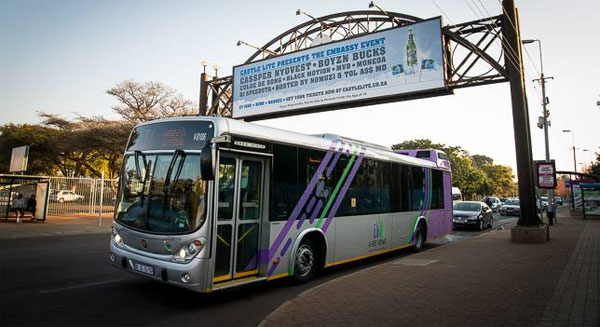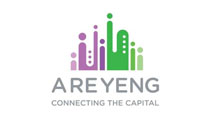 By Ismail Vadi
By Ismail Vadi
Tshwane residents who want to experience the city’s bus rapid transport system, A Re Yeng can do so for free every Saturday during October 2015.
The offer is part of the country’s Transport Month celebration to encourage the use of public transport. It also allows passengers to learn about its benefits such as free Wi-Fi, priority seating and easy access facilities.
The system has steadily grown since its launch, transporting more than 122 000 people between January and March this year. Tshwane Executive Mayor Kgosientso Ramokgopa in his 2015 State of the City Address noted an average 40 per cent growth in daily users.
As the single largest metropolitan municipality with more than 2.5 million residents A Re Yeng is changing the way residents interact and move about the city.
The first phase linked the city centre to Hatfield. The route is now being extended to link Soshanguve, Mamelodi, Menlyn and Lynnwood.

A Re Yeng mirrors other Bus Rapid Transit (BRT) systems that government is rolling out across the country as it works to establish an Integrated Rapid Public Transport Network.
Similar systems are operating in Johannesburg, Cape Town and George with construction already underway in Polokwane, Ekurhuleni, Ethekwini, Mbombela, Msunduzi and Rustenburg.
In the City of Johannesburg the long term plan is for its BRT system, Rea Vaya, to cover 330 kilometres, allowing more than 80 per cent of Joburg’s residents to catch a bus.
Our investment in the BRT system together with our priority rail corridors have transformed the way in which South Africans live, interact and access educational and economic opportunities.
It has improved the quality of life by making services, places of work, study and entertainment more accessible.
While our transport infrastructure investments are meant to make life better, the tragic accident that saw two people lose their lives when scaffolding for a temporary pedestrian bridge across the M1 highway in Sandton collapsed is devastating.
Government conveys its condolences to the families of those who died and wishes those injured a speedy recovery. Investigations into the cause of the accident are underway to ensure this never happens again.
This tragedy must strengthen our resolve to build transport infrastructure that is safe, convenient and positively changes the daily lives of all South Africans.
Already our work has begun to undo the fragmented public transport infrastructure inherited from the past which reinforced apartheid’s spatial planning.
Public transport under apartheid was designed to enforce, perpetuate and strengthen the separation of racial groups. It forced black South Africans into outlying areas and prevented them from accessing economic opportunities in the cities.
While this legacy has been difficult and costly to dismantle, we have reached a point where we can now move our public transport sector forward rather than simply fixing the failures of the past.
Government has over the last five years invested more than R25 billion to develop and improve the country’s transport system which has resulted in a safe, reliable, efficient and affordable service.
Our work in the transport sector is guided by the National Transport Master Plan 2050 towards a sustainable long-term transportation system. It is informed by the National Development Plan which envisions a transport system that supports economic development and creates jobs.
Our public transport infrastructure investments have created employment opportunities and improved economic efficiency with the timeous movement of people across our cities. It has changed our urban landscapes and the spin-off from improved travel conditions is greater investor confidence and economic development.
Moreover, it is a contributing factor in positioning our country as an attractive destination for investment, tourists and as a conferencing venue for high profile international events.
The integrated public transport system that we are striving towards helps decrease the number of vehicles on our roads to reduce the probability of road crashes.
It also supports our country’s carbon reduction goals as public transport is also one of the most environmentally-friendly forms of transport.
Public transport is far more efficient than personal motor vehicles in terms of the road space it uses and the energy it consumes. Every bus trip has the potential to keep more than 65 cars off the road.
The month-long EcoMobility World Festival that is taking place in Sandton showcases a future transport system where public transport, walking and cycling become the modes of choice. It demonstrates how our public spaces and daily life can improve when we remove congestion from our roads.
If every person moving through our cities uses public transport we will see a huge decline in air pollution, noise pollution and traffic congestion.
This Saturday take time out with your family to experience first-hand the country’s move towards a better transport system by hopping onto an A Re Yeng bus and be part of moving South Africa forward.
Ismail Vadi is MEC for Roads and Transport: Gauteng Provincial Government





